formerly eScholarship Editions


|
|
|
|
Your request for similar items found 20 book(s). | Modify Search | Displaying 1 - 20 of 20 book(s) | |
| 1. | 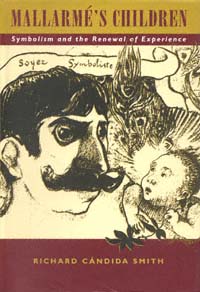 | Title: Mallarmé's children: symbolism and the renewal of experience Author: Smith, Richard Cándida Published: University of California Press, 2000 Subjects: History | Intellectual History | Art | European Studies | Literature Publisher's Description: In a narrative gracefully combining intellectual and cultural history, Richard Cándida Smith unfolds the legacy of Stéphane Mallarmé (1842-1898), the poet who fathered the symbolist movement in poetry and art. The symbolists found themselves in the midst of the transition to a world in which new media devoured cultural products and delivered them to an ever-growing public. Their goal was to create and oversee a new elite culture, one that elevated poetry by removing it from a direct relationship to experience. Instead, symbolist poetry was dedicated to exploring discourse itself, and its practitioners to understanding how language shapes consciousness.Cándida Smith investigates the intellectual context in which symbolists came to view artistic practice as a form of knowledge. He relates their work to psychology, especially the ideas of William James, and to language and the emergence of semantics. Through the lens of symbolism, he focuses on a variety of subjects: sexual liberation and the erotic, anarchism, utopianism, labor, and women's creative role. Paradoxically, the symbolists' reconfiguration of elite culture fit effectively into the modern commercial media. After Mallarmé was rescued from obscurity, symbolism became a valuable commodity, exported by France to America and elsewhere in the market-driven turn-of-the-century world. Mallarmé's Children traces not only how poets regarded their poetry and artists their art but also how the public learned to think in new ways about cultural work and to behave differently as a result. [brief] Similar Items |
| 2. | 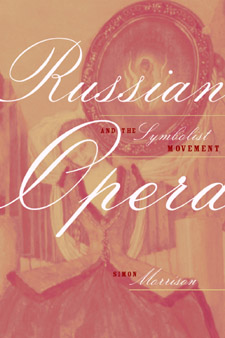 | Title: Russian opera and the symbolist movement Author: Morrison, Simon Alexander 1964- Published: University of California Press, 2002 Subjects: Music | Opera | Musicology | Composers | Russian and Eastern European Studies | Literature Publisher's Description: An aesthetic, historical, and theoretical study of four scores, Russian Opera and the Symbolist Movement is a groundbreaking and imaginative treatment of the important yet neglected topic of Russian opera in the Silver Age. Spanning the gap between the supernatural Russian music of the nineteenth century and the compositions of Prokofiev and Stravinsky, this exceptionally insightful and well-researched book explores how Russian symbolist poets interpreted opera and prompted operatic innovation. Simon Morrison shows how these works, though stylistically and technically different, reveal the extent to which the operatic representation of the miraculous can be translated into its enactment. Morrison treats these largely unstudied pieces by canonical composers: Tchaikovsky's Queen of Spades, Rimsky-Korsakov's Legend of the Invisible City of Kitezh and the Maiden Fevroniya, Scriabin's unfinished Mysterium, and Prokofiev's Fiery Angel. The chapters, revisionist studies of these composers and scores, address separate aspects of Symbolist poetics, discussing such topics as literary and musical decadence, pagan-Christian syncretism, theurgy, and life creation, or the portrayal of art in life. The appendix offers the first complete English-language translation of Scriabin's libretto for the Preparatory Act. Providing valuable insight into both the Symbolist enterprise and Russian musicology, this book casts new light on opera's evolving, ambiguous place in fin de siècle culture. [brief] Similar Items |
| 3. | 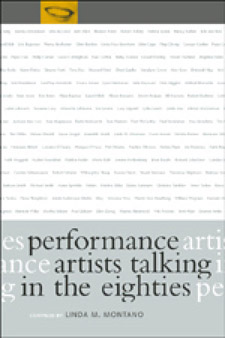 | Title: Performance artists talking in the eighties: sex, food, money/fame, ritual/death Author: Montano, Linda 1942- Published: University of California Press, 2001 Subjects: Art | Art History | Cinema and Performance Arts Publisher's Description: Performance artist Linda Montano, curious about the influence childhood experience has on adult work, invited other performance artists to consider how early events associated with sex, food, money/fame, or death/ritual resurfaced in their later work. The result is an original and compelling talking performance that documents the production of art in an important and often misunderstood community. Among the more than 100 artists Montano interviewed from 1979 to 1989 were John Cage, Suzanne Lacy, Faith Ringgold, Dick Higgins, Annie Sprinkle, Allan Kaprow, Meredith Monk, Eric Bogosian, Adrian Piper, Karen Finley, and Kim Jones. Her discussions with them focused on the relationship between art and life, history and memory, the individual and society, and the potential for individual and social change. The interviews highlight complex issues in performance art, including the role of identity in performer-audience relationships and art as an exploration of everyday conventions rather than a demonstration of virtuosity. [brief] Similar Items |
| 4. | 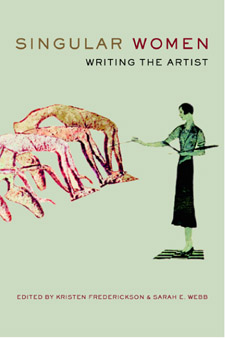 | Title: Singular women: writing the artist Author: Frederickson, Kristen 1965- Published: University of California Press, 2003 Subjects: Art | Art History | Art Criticism | Art Theory | Women's Studies Publisher's Description: In this groundbreaking volume, contemporary art historians - all of them women - probe the dilemmas and complexities of writing about the woman artist, past and present. Singular Women proposes a new feminist investigation of the history of art by considering how a historian's theoretical approach affects the way in which research progresses and stories are told. These thirteen essays on specific artists, from the Renaissance to the present day, address their work and history to examine how each has been inserted into or left out of the history of art. The authors go beyond an analysis of the past to propose new strategies for considering the contributions of women to the visual arts, strategies that take into account the idiosyncratic, personal, and limited rhetoric that confines all writers. [brief] Similar Items |
| 5. | 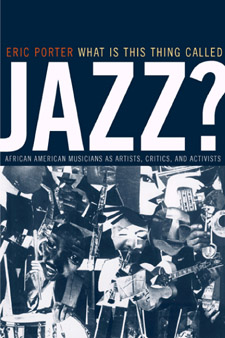 | Title: What is this thing called jazz?: African American musicians as artists, critics, and activists Author: Porter, Eric (Eric C.) Published: University of California Press, 2002 Subjects: Music | History | United States History | American Studies | African American Studies | American Music | Contemporary Music | Jazz Publisher's Description: Despite the plethora of writing about jazz, little attention has been paid to what musicians themselves wrote and said about their practice. An implicit division of labor has emerged where, for the most part, black artists invent and play music while white writers provide the commentary. Eric Porter overturns this tendency in his creative intellectual history of African American musicians. He foregrounds the often-ignored ideas of these artists, analyzing them in the context of meanings circulating around jazz, as well as in relationship to broader currents in African American thought. Porter examines several crucial moments in the history of jazz: the formative years of the 1920s and 1930s; the emergence of bebop; the political and experimental projects of the 1950s, 1960s and 1970s; and the debates surrounding Jazz at Lincoln Center under the direction of Wynton Marsalis. Louis Armstrong, Anthony Braxton, Marion Brown, Duke Ellington, W.C. Handy, Yusef Lateef, Abbey Lincoln, Charles Mingus, Archie Shepp, Wadada Leo Smith, Mary Lou Williams, and Reggie Workman also feature prominently in this book. The wealth of information Porter uncovers shows how these musicians have expressed themselves in print; actively shaped the institutional structures through which the music is created, distributed, and consumed, and how they aligned themselves with other artists and activists, and how they were influenced by forces of class and gender. What Is This Thing Called Jazz? challenges interpretive orthodoxies by showing how much black jazz musicians have struggled against both the racism of the dominant culture and the prescriptive definitions of racial authenticity propagated by the music's supporters, both white and black. [brief] Similar Items |
| 6. | 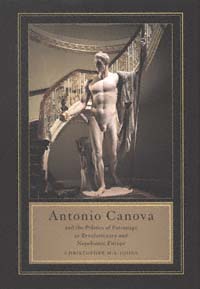 | Title: Antonia Canova and the politics of patronage in revolutionary and Napoleonic Europe Author: Johns, Christopher M. S Published: University of California Press, 1998 Subjects: Art | Art History | European Studies | European History Publisher's Description: The Venetian sculptor Antonio Canova (1757-1822) was Europe's most celebrated artist from the end of the ancien régime to the early years of the Restoration, an era when the traditional relationship between patrons and artists changed drastically. Christopher M. S. Johns's refreshingly original study explores a neglected facet of Canova's career: the effects of patrons, patronage, and politics on his choice of subjects and manner of working. While other artists produced art in the service of the state, Canova resisted the blandishments of the political powers that commissioned his works.Johns uses letters, diaries, and biographies to establish a political personality for Canova as an individual and an artist of international reputation. Though he had patrons as diverse as the pope, Napoleon, the Austrian Hapsburgs, the Prince Regent of Great Britain, and the Republic of Venice, Canova remained steadily employed and did so without controversy. A conservative and a Catholic, he devised a strategy that enabled him to work for patrons who were avowed enemies while remaining true to the cultural and artistic heritage of his Italian homeland. Using myth and funerary images and avoiding portraiture, he disguised the meanings behind his works and thus avoided their being identified with any political purpose.Johns greatly enhances our understanding of Canova's place in European art and political history, and in showing the influence of censorship, display, visual narrative, and propaganda, he highlights issues as contentious today as they were in Canova's time. [brief] Similar Items |
| 7. | 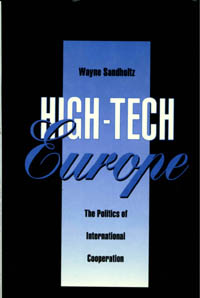 | Title: High-Tech Europe: the politics of international cooperation Author: Sandholtz, Wayne Published: University of California Press, 1992 Subjects: Politics | Public Policy | Economics and Business | Technology and Society Publisher's Description: A study of cooperative efforts in the high-tech industries of Europe. Sandholtz examines why collaboration came late to these countries, how protective walls came down, how countries work together in economically sensitive areas.Governments have recognized for decades the dynamic role played by microelectronics, computers, and telecommunications in the modern economy. Although Europe's deficiencies in these crucial sectors had long been acknowledged, it was not until the 1980s that European nations began collaborating to develop and promote high-tech industries. Their collaboration gives rise to many questions. Why, for example, did the joint efforts come at such a late date rather than in the 1960s or 70s? And how is it possible that they work together in economically sensitive areas? These questions point to fundamental issues in the areas of international cooperation, international institutions, and technology policy.Before the institution of the collaborative programs ESPRIT (European Strategic Programme for Research and Development in Information Technology), RACE (R & D in Advanced Communications-technologies in Europe), and EUREKA (European Research Coordination Agency) in the 1980s, each European country sought its own technological renaissance through protection of national firms behind walls of technical standards, procurement preferences, and research subsidies. Here is a thorough, carefully researched work that examines the breakdown of these walls. It will appeal to political scientists, economists, and scholars of technology and Western Europe interested in the political contours of the high-tech landscape. [brief] Similar Items |
| 8. | 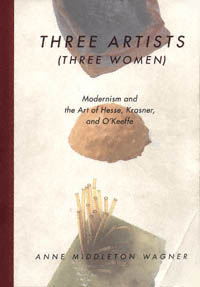 | Title: Three artists (three women): modernism and the art of Hesse, Krasner, and O'Keeffe Author: Wagner, Anne Middleton 1949- Published: University of California Press, 1996 Subjects: Art | Art History | Women's Studies Publisher's Description: This original and sharply obser-vant book gives new significance to three important figures in the history of twentieth-century art: Eva Hesse, Lee Krasner, and Georgia O'Keeffe. Anne Wagner looks at their imagery and careers, relating their work to three decisive moments in the history of American modernism: the avant-garde of the 1920s, the New York School of the 1940s and 1950s, and the modernist redefinition undertaken in the 1960s. Their artistic contributions were invaluable, Wagner demonstrates, as well as hard-won. She also shows that the fact that these artists were women - the main element linking the three - is as much the index of difference among their art and experience as it is a passkey to what they share. [brief] Similar Items |
| 9. | 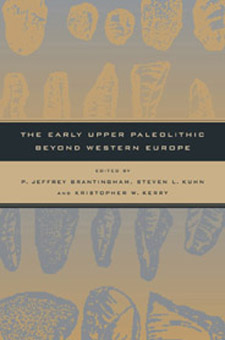 | Title: The early Upper Paleolithic beyond Western Europe Author: Brantingham, P. Jeffrey 1970- Published: University of California Press, 2004 Subjects: Anthropology | Archaeology | European History | European History | Middle Eastern History Publisher's Description: This volume brings together prominent archaeologists working in areas outside Western Europe to discuss the most recent evidence for the origins of the early Upper Paleolithic and its relationship to the origin of modern humans. With a wealth of primary data from archaeological sites and regions that have never before been published and discussions of materials from difficult-to-find sources, the collection urges readers to reconsider the process of modern human behavioral origins. Archaeological evidence continues to play a critical role in debates over the origins of anatomically modern humans. The appearance of novel Upper Paleolithic technologies, new patterns of land use, expanded social networks, and the emergence of complex forms of symbolic communication point to a behavioral revolution beginning sometime around 45,000 years ago. Until recently, most of the available evidence for this revolution derived from Western European archaeological contexts that suggested an abrupt replacement of Mousterian Middle Paleolithic with Aurignacian Upper Paleolithic adaptations. In the absence of fossil association, the behavioral transition was thought to reflect the biological replacement of archaic hominid populations by intrusive modern humans. The contributors present new archaeological evidence that tells a very different story: The Middle-Upper Paleolithic transitions in areas as diverse as the Levant, Eastern-Central Europe, and Central and Eastern Asia are characterized both by substantial behavioral continuity over the period 45,000-25,000 years ago and by a mosaic-like pattern of shifting adaptations. Together these essays will enliven and enrich the discussion of the shift from archaic to modern behavioral adaptations. [brief] Similar Items |
| 10. | 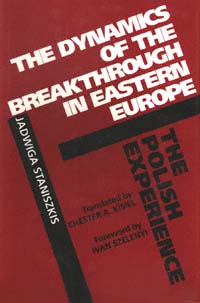 | Title: The dynamics of the breakthrough in Eastern Europe: the Polish experience Author: Staniszkis, Jadwiga Published: University of California Press, 1991 Subjects: Politics | European History | Sociology Publisher's Description: Understanding the dramatic political, social, and economic changes that have taken place in Poland in the mid-1980s is one key to predicting the future of the communist bloc. Jadwiga Staniszkis, an influential, internationally known expert on contemporary trends in Eastern Europe, provides an insider's analysis that deserves the attention of all scholars interested in the region.Staniszkis presents the breakthrough of 1989 as a consequence not only of systemic contradictions within socialism but also of a series of chance events. These events include unique historical circumstances such as the emergence of the "globalist" faction in Mosow, with its new, world-system perception of crisis, and the discovery of the round-table technique as a productive ritual of communication, imitated all over Eastern Europe. After describing the development, collapse, and reorganization of a "new center" in Poland in 1989-1990, she discusses the first attempt at privatizing the economy. Her analysis of the dilemmas accompanying breakthrough and transition is an invaluable guide to the challenges that face both capitalism and democracy in Eastern Europe. [brief] Similar Items |
| 11. | 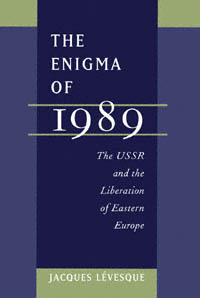 | Title: The enigma of 1989: the USSR and the liberation of Eastern Europe Author: Lévesque, Jacques Published: University of California Press, 1997 Subjects: Politics | History | European History | Russian and Eastern European Studies Publisher's Description: The Soviet external empire fell in 1989 virtually without bloodshed. The domino-like collapse of the communist regimes of Eastern Europe was not anticipated by political experts in either the East or the West. Most surprising of all was the Soviet Union's permissive reactions to the secession. For the first time in modern history, such an epochal upheaval could take place not only without war but also without major international tensions.This book is the first comprehensive scholarly attempt to elucidate Soviet behavior toward Eastern Europe in 1989. Jacques Lévesque thoroughly analyses the policies of the USSR toward Eastern Europe during the Gorbachev era and clarifies the goals that underpinned these policies.Based on interviews with political leaders and exhaustive research in Russia, Czechoslovakia, Hungary, Poland, and the other ex-Warsaw Pact countries, this book traces the nuances of each country's case as a set of continually changing, mutually reinforcing causes and effects. [brief] Similar Items |
| 12. | 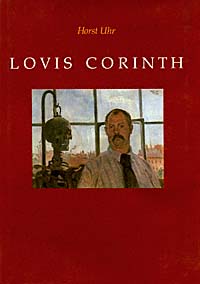 | Title: Lovis Corinth Author: Uhr, Horst 1934- Published: University of California Press, 1990 Subjects: Art | Art History Publisher's Description: This splendid and generously illustrated monograph by Horst Uhr is the first comprehensive study of one of the great individualists in the history of art. Lovis Corinth (1858-1925) has long been recognized as a major figure in German painting, along with Emile Nolde and Max Beckmann. Spanning a tremendously fertile period in European painting, his astonishingly productive career touched on major currents of art in his time, from the nineteenth-century academic tradition to Naturalism, Impressionism, and Expressionism. Corinth was accomplished in several media, including painting, drawing, and watercolor. After his death in 1925 virtually every major German city held its own memorial exhibition.Professor Uhr draws on the artist's own diaries and letters, observations by his family, and writings by contemporaries to construct a detailed narrative which places Corinth's deeply autobiographical and personal work in the context of turn-of-the-century art politics in Munich and Berlin. Corinth is seen in relation both to contemporary cultural figures, such as artists, critics, and dealers, and to the theater, the Jugendstil movement, the Berlin Secession, and the Nietzsche cult in Germany. Corinth's themes in combination with powerful use of color and bold application of paint distinguish him as a modern master. [brief] Similar Items |
| 13. | 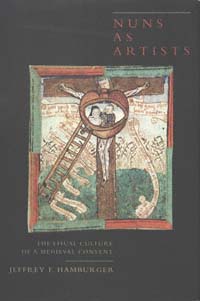 | Title: Nuns as artists: the visual culture of a medieval convent Author: Hamburger, Jeffrey F 1957- Published: University of California Press, 1997 Subjects: Art | Religion | Gender Studies | Art History | Medieval History Publisher's Description: Jeffrey F. Hamburger's groundbreaking study of the art of female monasticism explores the place of images and image-making in the spirituality of medieval nuns during the later Middle Ages. Working from a previously unknown group of late-fifteenth-century devotional drawings made by a Benedictine nun for her cloistered companions, Hamburger discusses the distinctive visual culture of female communities. The drawings discovered by Hamburger and the genre to which they belong have never been given serious consideration by art historians, yet they serve as icons of the nuns' religious vocation in all its complexity. Setting the drawings and related imagery - manuscript illumination, prints, textiles, and metalwork - within the context of religious life and reform in late medieval Germany, Hamburger reconstructs the artistic, literary, and institutional traditions that shaped the lives of cloistered women.Hamburger convincingly demonstrates the overwhelming importance of "seeing" in devotional practice, challenging traditional assumptions about the primacy of text over image in monastic piety. His presentation of the "visual culture of the convent" makes a fundamental contribution to the history of medieval art and, more generally, of late medieval monasticism and spirituality. [brief] Similar Items |
| 14. |  | Title: Decades of crisis: Central and Eastern Europe before World War II Author: Berend, T. Iván (Tibor Iván) 1930- Published: University of California Press, 1998 Subjects: History | European History | European Studies | Russian and Eastern European Studies | Economics and Business Publisher's Description: Only by understanding Central and Eastern Europe's turbulent history during the first half of the twentieth century can we hope to make sense of the conflicts and crises that have followed World War II and, after that, the collapse of Soviet-controlled state socialism. Ivan Berend looks closely at the fateful decades preceding World War II and at twelve countries whose absence from the roster of major players was enough in itself, he says, to precipitate much of the turmoil.As waves of modernization swept over Europe, the less developed countries on the periphery tried with little or no success to imitate Western capitalism and liberalism. Instead they remained, as Berend shows, rural, agrarian societies notable for the tenacious survival of feudal and aristocratic institutions. In that context of frustration and disappointment, rebellion was inevitable. Berend leads the reader skillfully through the maze of social, cultural, economic, and political changes in Hungary, Czechoslovakia, Yugoslavia, Poland, Romania, Bulgaria, Albania, Austria, Latvia, Lithuania, Estonia, and the Soviet Union, showing how every path ended in dictatorship and despotism by the start of World War II. [brief] Similar Items |
| 15. | 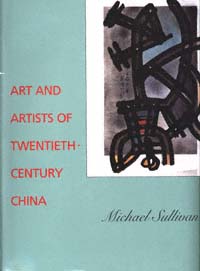 | Title: Art and artists of twentieth-century China Author: Sullivan, Michael 1916- Published: University of California Press, 1996 Subjects: Art | Art History | China Publisher's Description: This visually stunning book focuses on the rebirth of Chinese art in the twentieth century under the influence of Western art and culture. Michael Sullivan, recognized throughout the world as a leading scholar of Chinese art, vividly documents the conflicting pulls of traditional and Western values on Chinese art and provides 364 illustrations, in color and black-and-white, to show the great range of artistic expression and the historical processes that occurred within various movements. A substantial biographical index of twentieth-century Chinese artists is a valuable addition to the text.Sullivan discusses artists and their work against China's background of oppression and relaxation, despair and hope. He expertly conveys the diverse and at times bizarre intertwining of Chinese cultural history and art during this century. Included are the intense debates between traditionalists and reformers, the creation of the first art schools, and the birth of the idea - shocking in ethnocentric China - that art is a world language that obliterates all frontiers. The scholarly traditions of classical Chinese painting, the belated discovery of Western modernism, the artistic upheaval under Communism, and China's rethinking of the very nature of art all have a place in Sullivan's fascinating history.Michael Sullivan has known many of the major figures in China's modern art movement of the 1930s and 1940s and has also gained the confidence of younger artists who rose to prominence following the 1979 "Peking Spring." This long-awaited book - richly documented and abundantly illustrated - is a capstone to Sullivan's work and will be enthusiastically welcomed by art lovers everywhere. [brief] Similar Items |
| 16. | 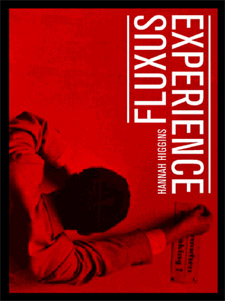 | Title: Fluxus experience Author: Higgins, Hannah 1964- Published: University of California Press, 2002 Subjects: Art | Art History | Art Theory | Art Criticism Publisher's Description: In this groundbreaking work of incisive scholarship and analysis, Hannah Higgins explores the influential art movement Fluxus. Daring, disparate, contentious - Fluxus artists worked with minimal and prosaic materials now familiar in post-World War II art. Higgins describes the experience of Fluxus for viewers, even experiences resembling sensory assaults, as affirming transactions between self and world. Fluxus began in the 1950s with artists from around the world who favored no single style or medium but displayed an inclination to experiment. Two formats are unique to Fluxus: a type of performance art called the Event, and the Fluxkit multiple, a collection of everyday objects or inexpensive printed cards collected in a box that viewers explore privately. Higgins examines these two setups to bring to life the Fluxus experience, how it works, and how and why it's important. She does so by moving out from the art itself in what she describes as a series of concentric circles: to the artists who create Fluxus, to the creative movements related to Fluxus (and critics' and curators' perceptions and reception of them), to the lessons of Fluxus art for pedagogy in general. Although it was commonly associated with political and cultural activism in the 1960s, Fluxus struggled against being pigeonholed in these too-prescriptive and narrow terms. Higgins, the daughter of the Fluxus artists Alison Knowles and Dick Higgins, makes the most of her personal connection to the movement by sharing her firsthand experience, bringing an astounding immediacy to her writing and a palpable commitment to shedding light on what Fluxus is and why it matters. [brief] Similar Items |
| 17. | 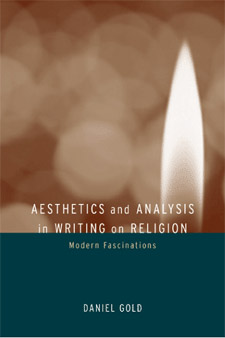 | Title: Aesthetics and analysis in writing on religion: modern fascinations Author: Gold, Daniel Published: University of California Press, 2003 Subjects: Religion | Comparative Religions Publisher's Description: This book addresses a fundamental dilemma in religious studies. Exploring the tension between humanistic and social scientific approaches to thinking and writing about religion, Daniel Gold develops a line of argument that begins with the aesthetics of academic writing in the field. He shows that successful writers on religion employ characteristic aesthetic strategies in communicating their visions of human truths. Gold examines these strategies with regard to epistemology and to the study of religion as a collective endeavor. [brief] Similar Items |
| 18. | 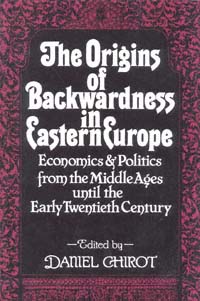 | Title: The origins of backwardness in Eastern Europe: economics and politics from the Middle Ages until the early twentieth century Author: Chirot, Daniel Published: University of California Press, 1989 Subjects: History | European History | Politics | Economics and Business Publisher's Description: Reaching back centuries, this study makes a convincing case for very deep roots of current Eastern European backwardness. Its conclusions are suggestive for comparativists studying other parts of the world, and useful to those who want to understand contemporary Eastern Europe's past. Like the rest of the world except for that unique part of the West which has given us a false model of what was "normal," Eastern Europe developed slowly. The weight of established class relations, geography, lack of technological innovation, and wars kept the area from growing richer.In the nineteenth century the West exerted a powerful influence, but it was political more than economic. Nationalism and the creation of newly independent aspiring nation-states then began to shape national economies, often in unfavorable ways.One of this book's most important lessons is that while economics may limit the freedom of action of political players, it does not determine political outcomes. The authors offer no simple explanations but rather a theoretically complex synthesis that demonstrates the interaction of politics and economics. [brief] Similar Items |
| 19. | 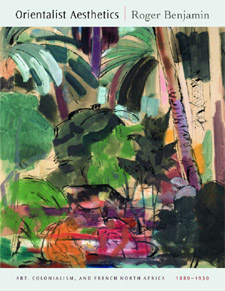 | Title: Orientalist aesthetics: art, colonialism, and French North Africa, 1880-1930 Author: Benjamin, Roger 1957- Published: University of California Press, 2003 Subjects: Art | Art History | French Studies Publisher's Description: Lavishly illustrated with exotic images ranging from Renoir's forgotten Algerian oeuvre to the abstract vision of Matisse's Morocco and beyond, this book is the first history of Orientalist art during the period of high modernism. Roger Benjamin, drawing on a decade of research in untapped archives, introduces many unfamiliar paintings, posters, miniatures, and panoramas and discovers an art movement closely bound to French colonial expansion. Orientalist Aesthetics approaches the visual culture of exoticism by ranging across the decorative arts, colonial museums, traveling scholarships, and art criticism in the Salons of Paris and Algiers. Benjamin's rediscovery of the important Society of French Orientalist Painters provides a critical context for understanding a lush body of work, including that of indigenous Algerian artists never before discussed in English. The painter-critic Eugène Fromentin tackled the unfamiliar atmospheric conditions of the desert, Etienne Dinet sought a more truthful mode of ethnographic painting by converting to Islam, and Mohammed Racim melded the Persian miniature with Western perspective. Benjamin considers armchair Orientalists concocting dreams from studio bric-à-brac, naturalists who spent years living in the oases of the Sahara, and Fauve and Cubist travelers who transposed the discoveries of the Parisian Salons to create decors of indigenous figures and tropical plants. The network that linked these artists with writers and museum curators was influenced by a complex web of tourism, rapid travel across the Mediterranean, and the march of modernity into a colonized culture. Orientalist Aesthetics shows how colonial policy affected aesthetics, how Europeans visualized cultural difference, and how indigenous artists in turn manipulated Western visual languages. [brief] Similar Items |
| 20. | 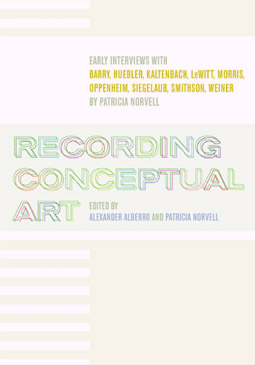 | Title: Recording conceptual art: early interviews with Barry, Huebler, Kaltenbach, LeWitt, Morris, Oppenheim, Siegelaub, Smithson, Weiner, by Patricia Norvell Author: Barry, Robert 1936- Published: University of California Press, 2001 Subjects: Art | Art History | Art Theory Publisher's Description: Recording Conceptual Art features a highly provocative series of previously unpublished interviews conducted in early 1969 with some of the most dynamic, daring, and innovative artists of the tumultuous 1960s. The nine individuals - eight artists and one art dealer - are now known as major contributors to Conceptual art. These fascinating dialogues, conducted by Patricia Norvell, provide tantalizing moments of spontaneous philosophizing and brilliant insights, as well as moments of unabashed self-importance, with highly imaginative and colorful individuals. [brief] Similar Items |